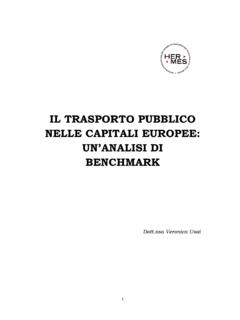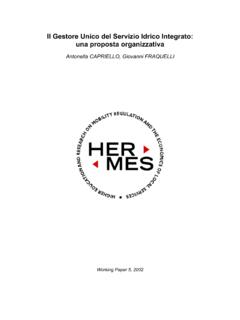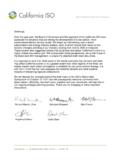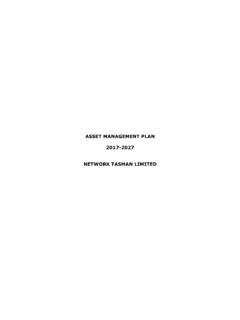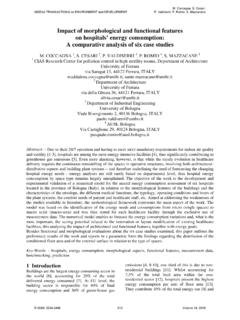Transcription of ECONOMIES OF VERTICAL AND HORIZONTAL …
1 ECONOMIES OF VERTICAL AND HORIZONTAL integration , unbundling AND QUALITY OF SERVICE IN PUBLIC UTILITIES. A LITERATURE REVIEW Clementina Bruno Working Paper n. 5/2011 2 PRESIDENTE Giovanni Fraquelli SEGRETARIO Cristina Piai COMITATO DIRETTIVO Giovanni Fraquelli (Presidente) Cristina Piai (Segretario) Guido Del Mese (ASSTRA) Graziella Fornengo (Universit di Torino) Giancarlo Guiati (GTT ) HERMES Fondazione Collegio Carlo Alberto Via Real Collegio, 30 10024 - Moncalieri (TO) Tel: +39 011 6705000 +390321375414 I diritti di riproduzione, di memorizzazione e di adattamento totale o parziale con qualsiasi mezzo (compresi microfilm e copie fotostatiche) sono riservati. 3 ECONOMIES OF VERTICAL AND HORIZONTAL integration , unbundling AND QUALITY OF SERVICE IN PUBLIC UTILITIES. A LITERATURE REVIEW Clementina Bruno1 (University of Bergamo and HERMES) Working paper n.
2 5/2011 ABSTRACT. This work is aimed to present a review of the literature on ECONOMIES of VERTICAL and HORIZONTAL integration , focused on the public utilities industry. First of all, the definition of ECONOMIES of scope and the different methods of evaluation are illustrated. Subsequently, the problem of integration connected with the implementation of unbundling (business separation) policies is presented for different categories of utilities (energy, telecommunications, water, multiutilities). The literature results quite rich concerning the electricity sector, where ECONOMIES of HORIZONTAL and VERTICAL integration seem to prevail. Paradoxically, it is the sector where the implementation of ( VERTICAL ) separation policies aimed to foster competition has reached the most advanced level. VERTICAL unbundling is also broadly applied in the gas sector, where it seems to have been less costly in terms of loss of operational efficiency.
3 In fact, the empirical evidence (here scarcer), does not show synergies coming from the joint management of upstream and downstream segments. About the water sector, the existing studies do not report unanimous results. However, the finding of no important synergies between water supply and sewerage seems to prevail. Instead, VERTICAL ECONOMIES seems to exist by managing jointly the different stages of the drinking water supply (water production , treatment and distribution), at least for some levels of output. The telecom industry has recently been involved in a wide debate concerning the cost and the opportunities of vertically separating the incumbent firms (in fixed telecom). It is also the sector where empirical findings on integration are more heterogeneous. The existing works mainly rely on quite old dataset, which constitutes a relevant limit in an industry whose technology evolves rapidly.
4 Finally, the multi utilities sector is analyzed. Important ECONOMIES of scope emerge from the joint production of several services (energy, gas and water supply). Such ECONOMIES seem to be correlated to the firm dimension, and larger for small level of output, while they decrease or turn into diseconomies for large production levels. Finally, the problem of the quality of service is treated, by examining the indicators used in these different sectors, and it is linked to the problem of integration . At the present moment, empirical studies on ECONOMIES of integration rarely involve quality measures, while the importance of such an element in terms of consumer welfare suggests that it can be an interesting point to be considered in future research. 1 The author acknowledges a grant for the Lagrange Proejct CRT Foundation.
5 4 INDICE 1. Introduction .. 5 2. VERTICAL and HORIZONTAL integration in public utilities.. 5 3. ECONOMIES of scope: definition and evaluation.. 7 4. Energy .. 8 5. Telecommunications .. 14 6. Water .. 17 7. Multiutilities .. 21 8. Quality of service .. 24 9. Conclusions .. 25 References .. 27 5 1. Introduction During the last two decades, the public utilities industry has undergone major regulatory reforms in developed and developing countries, mainly concerned with the privatization and the liberalization of these sectors. As a consequence of such a process, the economics of public services has been involved in a relevant academic and non academic debate, which highlighted, among other issues, those ones related with the degree of integration of the operating firms and the related problem of unbundling . The main considerations in implementing unbundling (business separation) policies are related to the correct balance between potential gains in terms of improved competition and potential cost efficiency losses.
6 The latter can occur due to the existence, in public utilities as in many other industries, of ECONOMIES of scale and, more concerned with the integration issue, ECONOMIES of scope. Competition and firms cost efficiency are a concern for regulators since they affect prices consumers face, and therefore their welfare, which however is also influenced by the quality of the service they are supplied; therefore the latter is as well an issue for regulators. This work will provide a review focused on the definition and the evaluation of ECONOMIES of scope in general, and on the empirical evidence of their existence and magnitude in different public services. Far from being exhaustive, this survey is aimed to provide examples of which kinds of integration and which possibilities for separation are a concern for regulators in energy, telecom, water and multiutilities sectors, showing which are the (sometimes controversial) main findings in empirical research.
7 Moreover, the quality of service issue will also be treated and connected with integration and unbundling problems. The paper is organized as follows. The next section illustrates the meaning of VERTICAL and HORIZONTAL integration and unbundling , with focus on the public utilities. Section 3 explains the definition and the methods of evaluation of ECONOMIES of scope. Section 4, 5, 6 and 7 analyze the integration and unbundling issues for energy, telecom, water and multiutilities sectors, respectively. Section 8 introduces the problem of quality of service. Section 9 draws some conclusions. 2. VERTICAL and HORIZONTAL integration in public utilities. Integrated firms are able to provide multiple outputs. As illustrated in Montgomery (1994), there are three main reasons for which firms can decide to diversify their production. Following the market power view, the reason driving towards integration is the possibility to enjoy larger market power and to undertake anti competitive behavior: cross subsidization (a firm uses profits coming from one market to sustain predatory prices in another one), mutual forbearance (firms meeting each other in several market are more likely to collude) and reciprocal buying (in order to foreclose the market to smaller competitors) are the main risk for competition.
8 The resource view (Penrose, 1959), suggests instead that firms diversify in order to reach a more efficient exploitation of excess capacity. This is especially relevant when one or some production factors are quasi public, their service can be shared by two or more product lines without complete congestion (Panzar and Willig, 1981, ), and when 6 such inputs cannot be traded in the market without significant transaction costs (therefore the firms prefers to keep them for internal use). The agency view, finally, recognizes firm s integration as a consequence of the managerial tendency towards empire building. Managers could pursue the goal of a enlarging firms boundaries just to increase their personal power, or to consolidate their position, for instance increasing firm s demand for their personal skills or reducing firm s risk through the diversification of the business.
9 Sometimes such strategies can be undertaken at shareholders expenses, as they are not driven by value maximizing reasons. The latter issue is mainly matter of internal corporate governance, as it involves the principal agent relationship between shareholders and managers. The market power and resource views, instead, are a concern for regulators controlling public utilities activity for the above mentioned reasons. In fact, they are facing a relevant trade off: integration should be limited in order to foster competition, which would benefit consumers through lower prices. However, such a limitation would not allow the exploitation of ECONOMIES coming from integration , thus increasing firms costs and probably affecting the final price for the consumers themselves. Therefore it is crucial for regulators to correctly identify the magnitude of potential benefits in term of competition coming from the implementation of unbundling (business separation), and the value of potential losses in term of ECONOMIES of scope ( ECONOMIES of joint production) that cannot be exploited.
10 ECONOMIES of scope can derive from VERTICAL or from HORIZONTAL integration . A firm is vertically integrated when it operates at successive levels in the production chain ( generation and distribution of electricity). Following Kaserman and Mayo (1991) and Garcia et al. (2007), cost saving coming from VERTICAL integration (as an alternative to separated firms exchanging resources through the market mechanism) can arise for several reasons. First, when the upstream firm enjoys some monopolistic power in pricing the intermediate product, this may lead to an inefficient input combination in the downstream stage, if the downstream firms can substitute inputs. Second, VERTICAL integration is a way to avoid transaction costs related to the market exchange. Moreover, Garcia et al. point out a third effect, related to technological ECONOMIES coming from physical interdependencies in production (complementarities and coordination ECONOMIES ).
